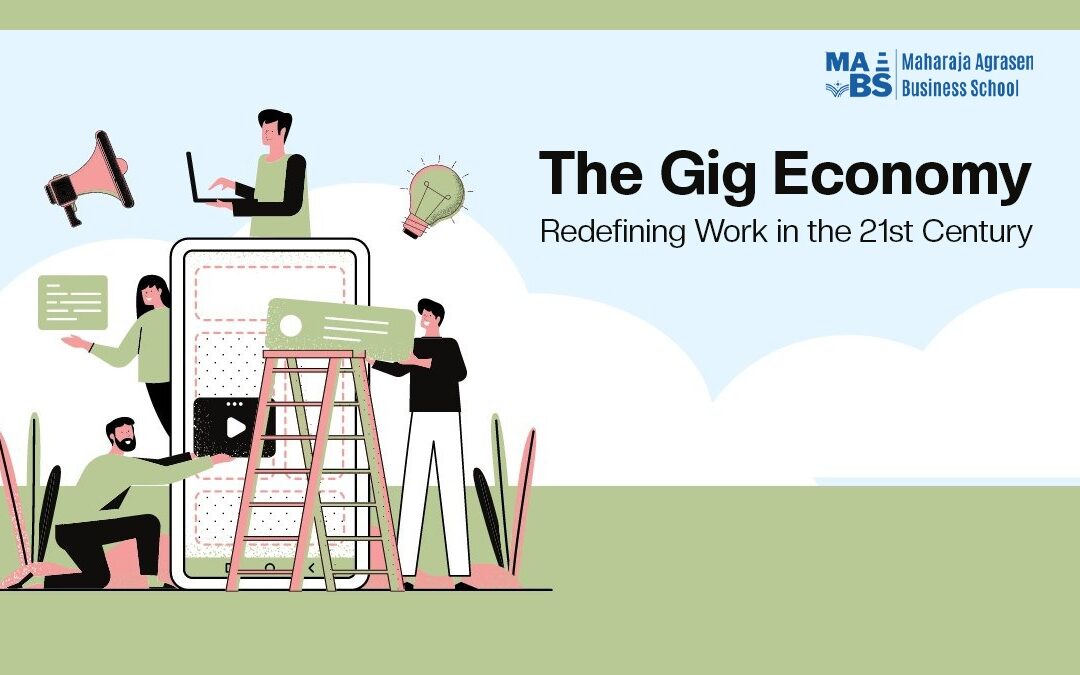In the ever-evolving landscape of work and employment, the gig economy has emerged as a disruptive force, challenging traditional notions of employment and reshaping the way people earn a living. Unlike traditional employment models characterized by full-time, long-term contracts, the gig economy is defined by short-term, flexible arrangements where individuals work on a project basis, often as independent contractors or freelancers. At the heart of the gig economy is the concept of gig work, where individuals leverage their skills and expertise to undertake specific tasks or projects for clients or businesses. This can range from freelance writing and graphic design to ride-hailing and food delivery services. Enabled by digital platforms and technology, gig workers have the flexibility to choose when, where, and how much they work, providing the autonomy and freedom that traditional employment lacks.
One of the key drivers behind the rise of the gig economy is the heavy use of digital platforms and mobile technology. Online marketplaces such as Blinkit have provided access to gig work, connecting freelancers with clients from around the world. Similarly, ride-hailing and food delivery apps like Uber and Zomato have created opportunities for individuals to accumulate income on their terms, using their vehicles and schedules. Moreover, the gig economy has opened up new avenues for income generation and economic participation, particularly for marginalized groups and underrepresented communities. For individuals with other responsibilities, disabilities, or other constraints that limit their ability to work traditional jobs, gig work offers a viable alternative, allowing them to earn income while accommodating their circumstances.
Furthermore, the gig economy has sprouted innovation and entrepreneurship, as individuals are increasingly undertaking the gig lifestyle to pursue their passions and monetize their skills. With the ability to market their services directly to clients and customers, gig workers can build their brands and businesses, forging their paths to success in a rapidly changing economy. However, the gig economy also presents challenges and concerns, particularly around job security, benefits, and worker rights. Unlike traditional employees, gig workers often lack access to benefits such as health insurance, retirement plans, and paid leave. Additionally, the nature of gig work can lead to income volatility and financial insecurity, especially during periods of low demand or economic downturns. Furthermore, the classification of gig workers as independent contractors rather than employees has sparked debates around workers’ rights and regulations. Advocates argue for greater protection in the form of demands for new schedules to be inserted into labor laws for gig workers, while critics raise concerns about the potential for increased expenditures and regulatory burdens that could block innovation and entrepreneurship in the gig economy.
In conclusion, the gig economy represents a shift in the way people work, offering unprecedented employment and opportunities for income generation. The gig economy can contribute to GDP growth in several ways. One significant factor is increased economic activity. With more people participating in gig work, there is a rise in the production of goods and services. For example, freelance writers, graphic designers, and software developers contribute to the creation of content, designs, and software solutions, all of which add value to the economy. Similarly, gig workers in sectors like food delivery provide services that generate income and consumer spending, stimulating economic growth. Moreover, the gig economy fosters innovation and entrepreneurship. Gig workers often bring fresh ideas and solutions to the market, driving competition and pushing existing businesses to innovate. Additionally, gig workers who start their businesses or brands contribute to job creation and investment, further boosting economic activity and GDP.
However, the gig economy also has negative aspects that need consideration. One major concern is the lack of job security and benefits for gig workers. Unlike traditional employees, gig workers typically don’t receive benefits like health insurance, retirement plans, or paid leave. This can leave gig workers financially vulnerable, especially during periods of low demand or economic downturns, impacting their well-being and overall economic stability. Gig workers may experience fluctuations in income due to changes in demand, competition, or platform policies. This uncertainty can make it challenging for gig workers to plan for the future or achieve financial goals, potentially contributing to economic instability at the individual and societal levels. Gig workers may have limited access to legal safeguards, collective bargaining, and recourse in cases of exploitation or unfair treatment. This lack of regulation can lead to inequalities and undermine worker rights, posing ethical and social challenges within the gig economy.
In conclusion, while the gig economy can stimulate GDP growth through increased economic activity and innovation, it also presents significant drawbacks, including job insecurity, income volatility, and concerns about worker rights. As a commerce student, Ojass Malhotra emphasizes the importance of critically examining both the positive and negative impacts of the gig economy to gain a comprehensive understanding of its implications for individuals, businesses, and the broader economy.
Ojass Malhotra
Student, MABS
PGDM 2024-26

